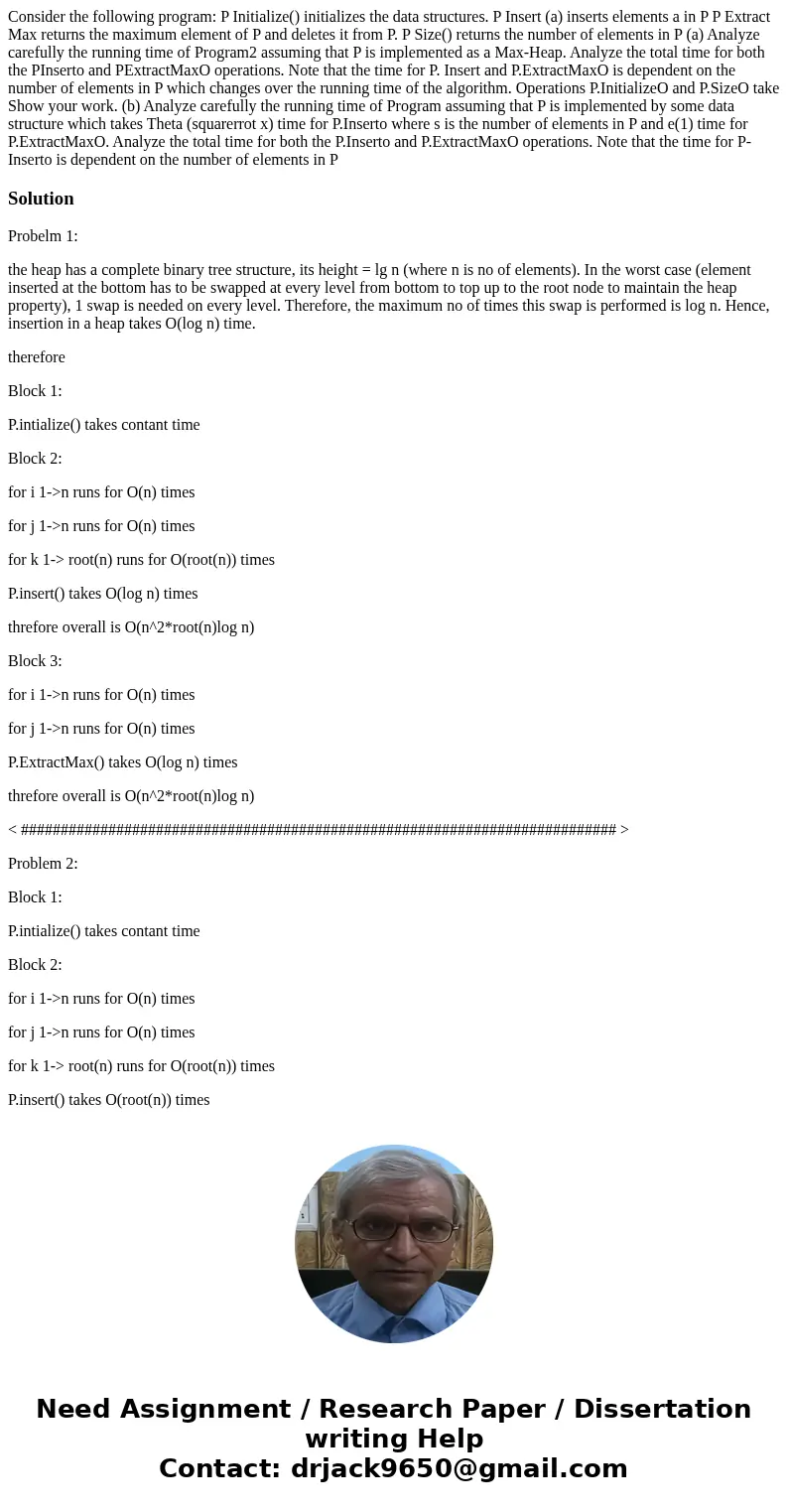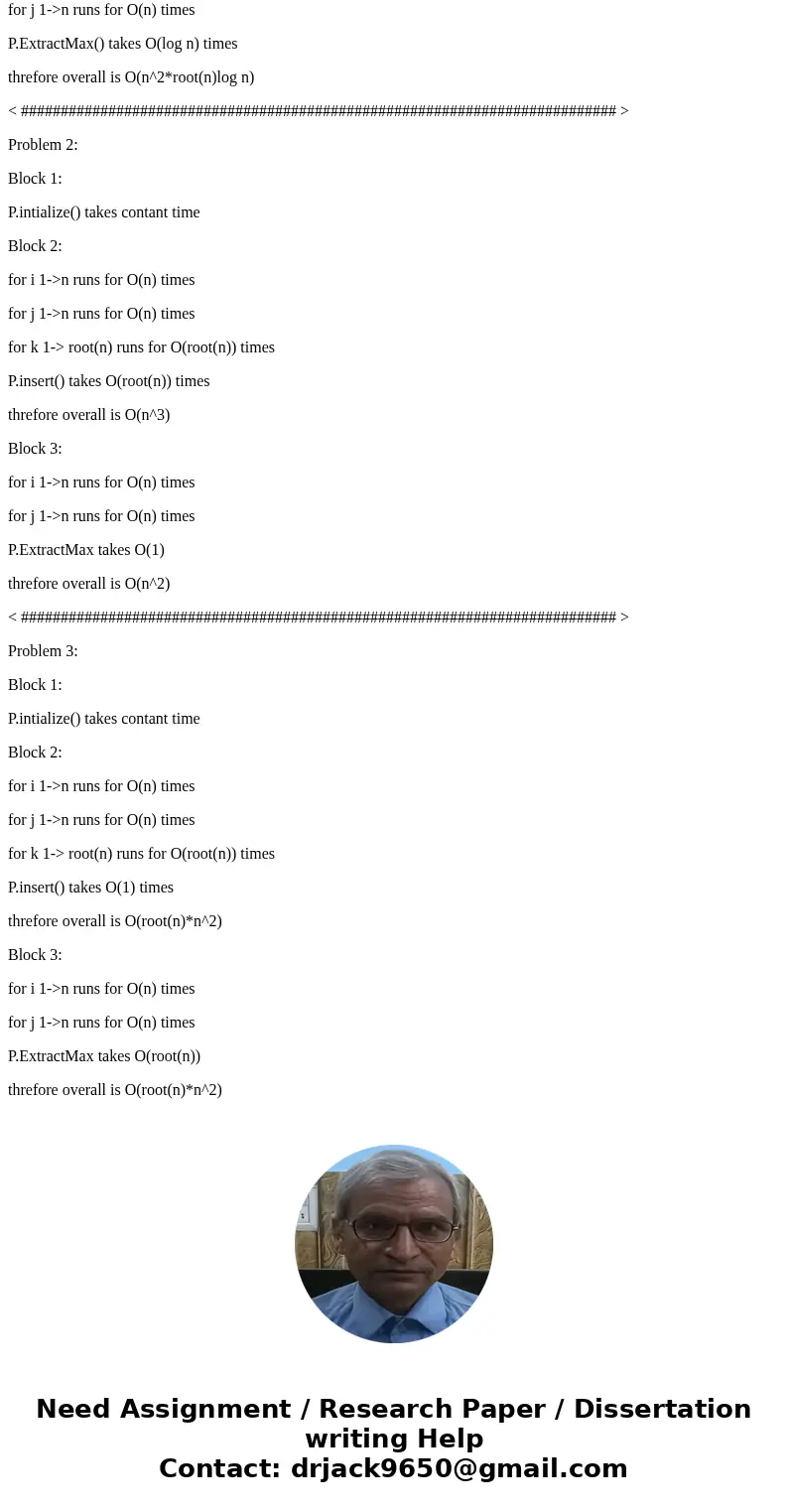Consider the following program P Initialize initializes the
Solution
Probelm 1:
the heap has a complete binary tree structure, its height = lg n (where n is no of elements). In the worst case (element inserted at the bottom has to be swapped at every level from bottom to top up to the root node to maintain the heap property), 1 swap is needed on every level. Therefore, the maximum no of times this swap is performed is log n. Hence, insertion in a heap takes O(log n) time.
therefore
Block 1:
P.intialize() takes contant time
Block 2:
for i 1->n runs for O(n) times
for j 1->n runs for O(n) times
for k 1-> root(n) runs for O(root(n)) times
P.insert() takes O(log n) times
threfore overall is O(n^2*root(n)log n)
Block 3:
for i 1->n runs for O(n) times
for j 1->n runs for O(n) times
P.ExtractMax() takes O(log n) times
threfore overall is O(n^2*root(n)log n)
< ########################################################################### >
Problem 2:
Block 1:
P.intialize() takes contant time
Block 2:
for i 1->n runs for O(n) times
for j 1->n runs for O(n) times
for k 1-> root(n) runs for O(root(n)) times
P.insert() takes O(root(n)) times
threfore overall is O(n^3)
Block 3:
for i 1->n runs for O(n) times
for j 1->n runs for O(n) times
P.ExtractMax takes O(1)
threfore overall is O(n^2)
< ########################################################################### >
Problem 3:
Block 1:
P.intialize() takes contant time
Block 2:
for i 1->n runs for O(n) times
for j 1->n runs for O(n) times
for k 1-> root(n) runs for O(root(n)) times
P.insert() takes O(1) times
threfore overall is O(root(n)*n^2)
Block 3:
for i 1->n runs for O(n) times
for j 1->n runs for O(n) times
P.ExtractMax takes O(root(n))
threfore overall is O(root(n)*n^2)


 Homework Sourse
Homework Sourse